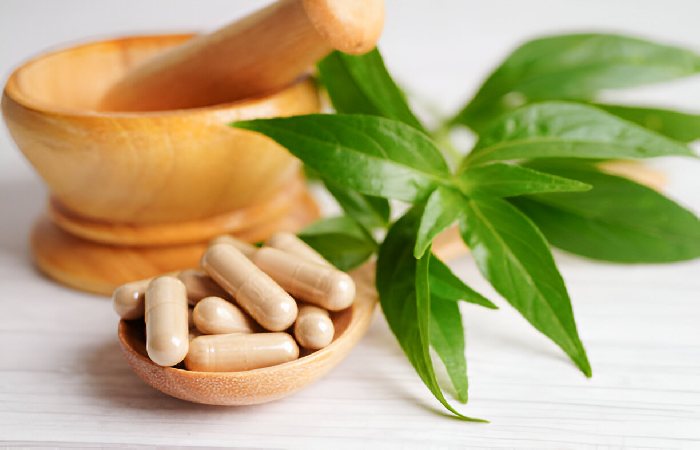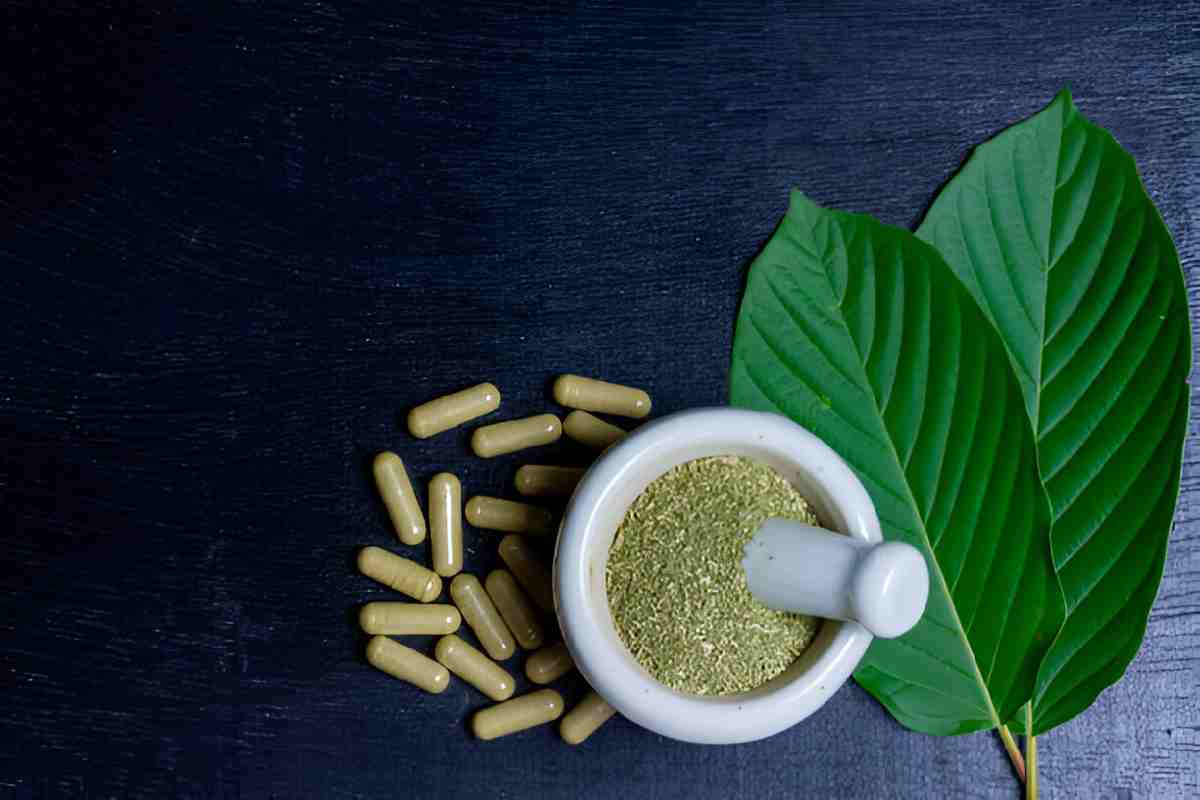Table of Contents
Introduction
Kratom, a tropical plant native to Southeast Asia, is known for its stimulating and pain-relieving properties. But did you know it’s also making waves in the world of skincare? From soothing inflammation to reducing redness, Kratom is being used in oils, masks, and DIY skin treatments.
In this article, we explore how Kratom affects the skin, whether it’s safe to use topically, and how to include it in your routine.
What Is Kratom?

Kratom is a natural herb derived from the leaves of the Mitragyna speciosa tree, a tropical species native to Southeast Asia. It has traditionally been used for energy, focus, and pain relief. Today, it’s being explored for topical applications due to its alkaloids, like mitragynine and 7-hydroxymitragynine, which may benefit the skin.
Potential Benefits of Kratom for Skin
Anti-Inflammatory Properties
Kratom’s natural alkaloids may reduce skin inflammation, making it helpful for:
- Red, irritated skin
- Rosacea and eczema flare-ups
- Post-acne swelling
Antioxidant Effects
Kratom leaves are rich in antioxidants, which help combat free radicals and slow the signs of ageing. This can:
- Improve skin tone
- Prevent premature wrinkles
- Support collagen production
Pain-Relief for Skin Conditions
Applied topically, Kratom-infused oils or creams may offer relief for:
- Joint pain (like in hands or knees)
- Skin discomfort due to dryness
- Razor bumps or ingrown hairs
Natural Cleanser
Some users claim that Kratom powder, when mixed with a cleanser, helps remove:
- Excess oil
- Dead skin cells
- Acne-causing bacteria
Is Kratom Better Than CBD for Skin?
Both Kratom and CBD are herbal wellness powerhouses, but they differ significantly when it comes to skincare.
- CBD is well-studied, widely used in serums and creams, and is known for its ability to reduce inflammation and acne.
- Kratom is newer to skincare, with more potent alkaloids that may help with deep inflammation or pain, but lacks clinical studies.
If you’re seeking soothing and anti-ageing effects, CBD may be a better option. If you’re exploring natural pain relief for skin discomfort or irritation, Kratom might be worth a try.
Scientific Studies on Kratom and Skin Health
Scientific research on topical Kratom use is limited, but early data is promising:
- A 2020 study published in Frontiers in Pharmacology found that Kratom alkaloids exhibit anti-inflammatory and antioxidant effects at the cellular level.
- Anecdotal reports suggest improvement in eczema, dermatitis, and inflammation, though more human trials are needed.
Pro Tip: Until more science is available, use Kratom topically only after patch testing.
Can You Use Kratom Daily on Skin?
Using Kratom topically every day is not recommended — yet.
Why?
- Kratom is alkaloid-heavy, and daily exposure could cause dryness or sensitivity.
- Most users report the best results when using it 2–3 times per week.
Alternate with mild skincare ingredients like aloe vera, niacinamide, or green tea extract for balance
Kratom in Commercial Skincare Products: Is It Safe?
Some emerging brands are adding Kratom extract to:
- Cleansers
- Soaps
- Pain relief balms
- Shaving gels
What to look for:
- Organic or wildcrafted Kratom extract
- No synthetic fragrances or alcohol
- pH-balanced formulas
Always read the ingredients and do a patch test before use
Risks & Side Effects
While Kratom has potential skin benefits, it comes with cautions:
- Skin Sensitivity: Some people may develop irritation or allergic reactions.
- Purity Issues: Not all Kratom powders are skin-safe. Choose organic, lab-tested sources.
- Limited Research: Scientific studies on Kratom’s skincare effects are still minimal.
Tip: Always do a patch test before applying Kratom topically.
How to Use Kratom for Skin
Kratom Face Mask
Mix Kratom powder with:
- 1 tsp honey
- A few drops of tea tree oil
- Apply for 10 minutes, rinse off with warm water.
Kratom-Infused Oil
Infuse organic coconut oil with Kratom leaf powder over low heat. Use as a:
- Moisturizer
- Massage oil
- After-shave balm
Kratom Toner (DIY)
Brew Kratom tea, let it cool, and use it as a facial mist (without preservatives; store in the fridge for up to 3 days).
Who Should Avoid It?
- Pregnant or breastfeeding women
- People with sensitive or broken skin
- Anyone taking medications that interact with Kratom
Recommended Products
- Organic Kratom Leaf Powder (Lab-tested, chemical-free)
- Kratom-Infused Body Oil
- Kratom Soap Bar (Great for body acne)
FAQs
Q: Can I apply Kratom powder directly to my skin?
A: Yes, but mix it constantly with a carrier oil, such as honey or olive oil, to reduce irritation.
Q: Does Kratom help with acne?
A: Anecdotal evidence says it can reduce redness and swelling, but it’s not a proven acne treatment.
Q: Is Kratom legal for skincare?
A: In most countries and states, yes — but always check local laws.
Final Thoughts
Kratom might be the next underrated ingredient in the world of natural skincare. While research is still ongoing, early signs indicate promise, particularly in reducing inflammation, promoting anti-ageing effects, and providing soothing benefits.

